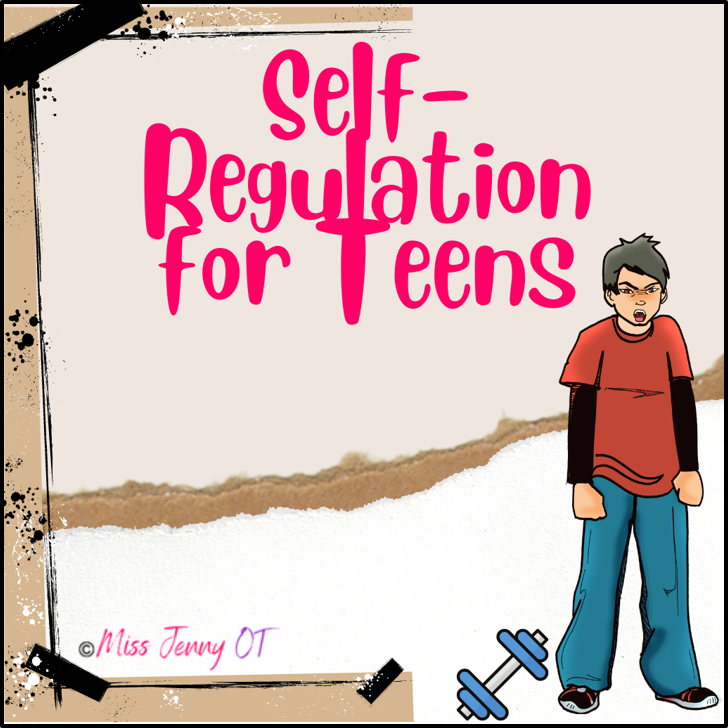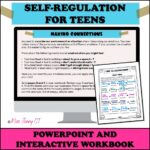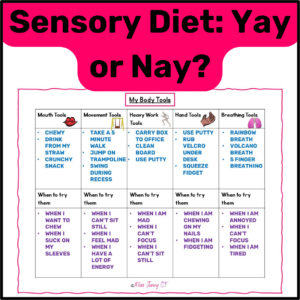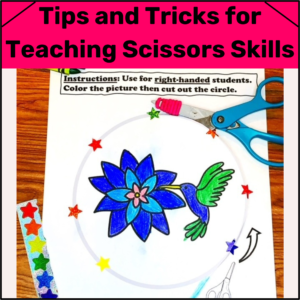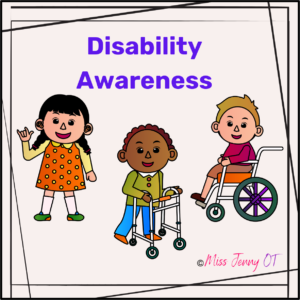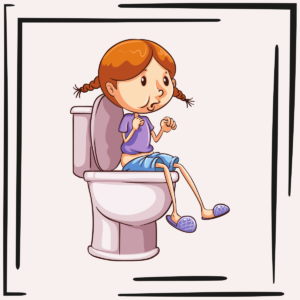Self-Regulation for Teens
Self-regulation for teens can look much different than it does for younger kids. Teens generally are dealing with changing hormones as well as emotional changes.
How do we approach working with teens?
It is important to first establish rapport with the teen. Some teens may have already been through a variety of programs (OT, Speech Language Therapy, ABA, and/or counseling, to name a few). As a result, they will have preconceived notions which may be negative. It is important to meet them where they are, knowing that it may take a long time to gain their trust. Try to find out their interests and hobbies and build from there. When teens like a certain video game, search to see if there are any appropriate videos you can use to demonstrate topics. You can do the same thing with TV shows, movies, or books.
Once you have found some appropriate media, consider doing a “walk and talk” or “move and talk” where you discuss their interest. For example, in my clinic we have a variety of swings. Many teens enjoy swinging while we talk about the latest project they are doing in Minecraft™. We might then discuss how they would handle getting frustrated if something isn’t working right while they are building. The same process applies to the “walk and talk”, where we talk about the project and issues while we walk. Incorporating movement often takes the pressure off the teen and they open up more than if we were seated at a table.
In addition to the “walk and talk” or “move and walk”, you can introduce the media that you located. In the Minecraft™ example, perhaps you can find a video of a creator who gets stuck and you can watch what they do. Another approach might be to do the activity together then draw pictures of strategies using that topic. The teen could draw a picture of themselves using a strategy in their Minecraft™ world.
Teens that enjoy certain characters (such as superheros) could create a comic strip with themselves as their favorite superhero solving one of their trigger issues. Canva is one website that you can use with teens to create their own comic strip (Canva.com). Canva offers free accounts with access to templates. Otherwise, an internet search will bring up other sites to try.
How to teach teens about self-regulation?
Teens often enjoy learning that there are more than 5 senses, especially when we experience them. For vestibular, we often will do some form of movement, such as a race. We lift weights to learn about proprioception. And for interoception, we notice our sensations in different parts of our bodies while racing and lifting weights.
Teens that are non-verbal can participate using their AAC devices to express what they notice, by using yes/no charts, and/or by pointing to descriptive words. It is necessary to be familiar with the teen’s communication method and their cognitive level. If needed, consult with a psychologist or speech language pathologist regarding cognition and communication status.
Watching age-appropriate videos (ideally with teens in them) to demonstrate the senses is another method to try.
How do teens know they need to self-regulate?
Teaching teens to notice the changes in their body sensations with changes in emotions is key to helping them learn to self-regulate. If they do not notice that their face is getting hotter, their heart is pounding, their muscles are tense, their breathing has increased, and they don’t understand how to do their homework, they may explode and tear up the paper instead of using a strategy.
Learning to improve their interoception is key to knowing when to use strategies.
Refer to my previous blog post, “How to Teach Interoception” for ideas and activities to try. In addition to the activities in that post, the same activities that were used to introduce the senses can be used to teach teens to notice their sensations.
What activities should you try with teens?
For teens, I would utilize age-appropriate activities to teach interoception and strategies. Teens may enjoy activities including yoga, weight-training, bike riding, hiking, and sports. These activities lend themselves well to noticing heartbeat, breathing, and how muscles feel. If a teen works their muscles then feels “wobbly” that can be compared to how one might feel when anxious or hungry. During weight-training, they can notice tight muscles, which might also occur when they are frustrated.
If the teen does not want to engage in movement-based activities, we might monitor their sensations during their sedentary hobbies. If a student likes to draw, we might pause and do a body check. We can notice how our feet feel on the floor, or how our hands feel grasping the pencil. We can notice our breathing and if it changes if we are interrupted with our drawing. The important thing is to consider the teen’s preferences to get them to participate in the activities.
Doing body checks (where we stop and notice as many sensations in our bodies as we can) should be done in multiple settings and multiple timeframes. The more practice teens get with noticing their sensations during calm periods, the more they will begin to notice them as their emotions change.
The same activities may be useful for strategies. When we use our muscles, we activate our proprioceptive system, which generally calms our nervous system. Doing an activity such as yoga or a quick bike ride before school may help teens prepare themselves for the day ahead.
What strategies might work at school?
Teens do not want to stand out at school and may resist any strategies that might make others notice them. Strategies that they may have used when younger (or that adults may recommend to younger kids) such as wall push-ups will usually not be used by teens.
Instead, consider some of the following strategies to try:
- Use a weighted backpack (school books may be enough). Do not use more than about 10% of their body weight.
- Chew gum if allowed by school
- Use water bottle with a bite valve (to give proprioceptive input to the mouth)
- Eat snacks and meals that provide some resistance to chewing (similar to beef jerky)
- Suggestions include apples, fruit leather, carrots, celery, and pieces of dried fruit
- Volunteer to help teacher pass out papers to get a movement break
- Set up with teacher a signal to take a break if needed
- Some teachers will give teens something to take to another class as part of a pre-arranged break
- Bring discreet fidgets to hold in hands as needed. Fidgets must be used as tools, not toys.
- Get teen’s input into strategies they think will work
If teens need more help with determining strategies that might work for them, consider this resource that I have created:
![]() CLICK THE PICTURE TO VIEW THE RESOURCE DETAILS
CLICK THE PICTURE TO VIEW THE RESOURCE DETAILS 
Teens can use this to experiment with different “tools” and determine the ones that work best for them to use as strategies.
I also created a teen-specific resource with a PowerPoint for them to learn more about self-regulation and sensory processing, with an interactive workbook to fill out along the way. Click the image below to learn more.
This should give some helpful ideas to get started or to continue your journey working with teens on self-regulation. Stay tuned for future posts on working with teens. In addition, future posts will address how to differentiate for students with developmental delays (including cognitive and/or verbal skills)


